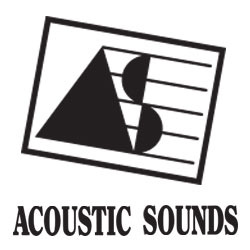However cool or unimpressed we try to be, there’s no escaping ‘prestige’ endorsements. Even if there’s been some financial inducement – what did it cost BMW to get James Bond to drive a German car? – we’re still impressed. But I have to say that Simon Yorke pulled off the niftiest endorsement any hi-fi manufacturer could hope to secure: his turntable is used by the Library of Congress in the USA. And they paid for the privilege. If that doesn’t make you give his turntable a second glance, then you must be George Sanders reincarnated.
Admittedly, British xenophobes will think, ‘Library of Congress? Big deal.’ Sorry, gang, but the LoC makes the BBC’s archives look like your local Our Price. According to Yorke’s figures, the Beeb has 500,000 recordings in its vaults. The Yanks’? Three million.
Think of the implications. The Simon Yorke Designs S7 Precision Analogue Disc Transcription System is made in li’l ol’ County Durham, yet the USA itself can boast Rockport, Basis and other LP spinners of note. So much for the LoC having to buy American. But Simon Yorke is the guy whose turntable/arm combination was chosen by the world’s largest sound archive to spin its utterly irreplaceable discs during transfer to tape for archival storage and therefore for posterity. And if you think that the S7 reviewed here bears no more resemblance to the LoC’s actual unit than a Clio does to Villeneuve’s Williams-Renault, think again.
Beneath the addenda which makes the LoC’s version of the ‘7 suitable for transcription purposes lurks the same core which defines the ‘domestic’ S7 and arm. The price span, however, ranges from the £6668 entry-level 9in arm-plus-turntable which I used to the made-to-order device used by the LoC at £15,625. Note, however, that the latter price includes delivery and installation “world-wide”.
Whether you opt for the economy model or wish to pretend that you’re an enormous building in Washington, D.C., you <won’t> want to set it up yourself. Yorke insists that it’s a doddle using instructions which run to a dozen detailed pages. I watched him do it with the fluid, casual movements which betray his role as its designer, and still I know that I would screw it up beyond redemption because Yorke is so blasÈ about positioning the free-standing drive pulleys to provide the correct belt tension. I was horrified with his glib, ‘Just check if it feels right’ attitude, but more about that later.
A checklist itemises the system’s 25 or so components. What you’ll miss if someone else installs it is the opportunity to examine, fondle and therefore fully appreciate workmanship beyond criticism. It makes you wonder how a guy who could almost pass for Swampy manages to work to such levels. Yorke had it up and running (including the assembly of the unipivot tonearm and the fitting of an exquisite £2450 Crown Jewel Reference moving coil on loan from RT Services) in under 35 minutes. And the instant he pressed that oh-so-cool, ball-shaped on/off button, the unit performed and sounded like a dream.
But first you will need to acquire a serious stand. The Series 7’s motor pillar, transfer bearing housing and main chassis rest on a 30mm thick slab of Italian slate measuring 580x358mm, and the total weight comes to 48kg. Which has something to do with the deck being fashioned almost entirely from stainless steel.
The main bearing uses a hardened stainless steel shaft, rotating in precision-bored, low-friction sleeves, its thrust bearing made up of two carbon steel balls in a point-contact configuration. The record spindle is detachable, primarily to allow custom-built spindles to be fitted for specific non-standard discs or to allow the use of special clamps.* The platter is “a perfectly balanced flywheel”, machined to micron accuracy from a 30mm slab of non-magnetic stainless steel; it weighs in excess of 11 kg, and Yorke says that the stored kinetic energy “guarantees absolute stability of speed without resort to fanciful electronics.”
Beneath it is the main chassis, a 185mm diameter stainless steel disc which houses the turntable bearing and supports one or two armboards as specified. The A.C. synchronous motor and transfer bearing units connect to it solely by the two drive belts, leaving the turntable itself entirely immune to motor-borne vibration. A standard S7 offers speeds of 33.3, 45 and 78 rpm, but it can be supplied less the intermediate transfer bearing assembly for a fixed speed of 33.3 rpm.
What rattled my cage is that the enclosures containing the motor and the intermediate transfer bearing are free-standing and no template is provided for exact positioning. Yorke pooh-poohed my concerns, as he seems totally oblivious to the anal obsessiveness during set-up of audiophiles. This is rather amusing when you consider how fanatical is his attention to detail everywhere else. But he just plunked ’em down to the left of the deck, fitted the belts and pinched them together like a mechanic checking the slack on a fan-belt. OK, OK, so the speeds were spot-on according to two different strobe discs, but that’s not the point: I’d want absolute peace of mind for my £6k-plus, instead of relying on guesstimates.
On the motor housing is a small ball which you depress to switch on the motor. This was the sort of detail which elicited the same responses in observers as did the Nagra pre-amp. All who beheld the S7 wanted one badly and couldn’t resist playing with the on/off ball. The module next to it, the transfer bearing, is topped by a three-step pulley; you move the belt to access the speeds, and corresponding grooves in the platter preclude belt ‘wandering’ or drift.
Yorke supplies an ‘acrylic-over-cork’ record mat, but he isn’t averse to owners using other mats. He even points out that, due to the Series 7’s astonishing neutrality, “other materials may be used to provide an alternative acoustic impedance to the disc in play. Different record mats will sound significantly unique on this turntable, providing a useful means for tailoring the sound to specific needs.” Another item which illustrates the impossibly high standards Yorke achieves in manufacture is the exquisite record clamp. In terms of feel, heft and appearance, it could be sold separately to serve as the ideal paperweight on the desk of any audiophile. Even if he asked £200 for this puck, he’d be back-ordered for months. As he is with the Series 7 itself.
Attached to the main chassis is an interchangeable armboard laser-cut from a “composite multi-layer natural material” which optimises the transmission and damping of system resonances. Most domestic users stick with one arm, but the versatility of this deck, especially for archivists, allows the easy fitting of arms of varying lengths, as well as platters suitable for the playback of masters, lacquers and archive discs in 14, 16 and 20in diameters. Another pro option is an Airpax D.C. motor with variable speed control from 10-120rpm in both directions, controlled manually or by computer.
Although Yorke can supply boards for most arms, it seemed silly to use it with other than the arm for which it was conceived. This is a unipivot design available in 9in or 12in lengths, “configured to permit free movement in both the lateral and vertical planes whilst preventing movement in the rocking plane”. Made aluminium alloys, non-magnetic stainless steel and PTFE, its surfaces are treated with a “stress-relieving process and are non-anodised as anodic treatments produce a very hard skin which tends to create an equally ‘hard’ sound characteristic.”
The tube is made from drawn aluminium reinforced with a tapered external tube, internally damped with bituminous foam. The pivot is a 9.5mm hardened stainless steel pointed shaft, aligned by a slotted plate which prevents non-rotational or vertical movement; a PTFE sleeve minimises any friction. The detachable headshell can be adjusted for overhang and azimuth, and it locks to the arm via the cartridge mounting screws. A cueing device is fitted and anti-skating is set through an adjustable threaded weight assembly. The arm is wired with silver-over-copper stranded cable with a Teflon dielectric, its four strands configured as twisted balanced pairs, fixed to a connector plate mounted beneath the arm. This can be specified for unbalanced or fully balanced interconnects. Vertical tracking angle is adjusted by a thumbwheel below the main pivot, each full rotation producing a 1mm change in the VTA. The setting is then locked by a set-screw.
As I said before, I didn’t have to deal with any of this. All I had to do was listen. And once I had isolated the sound of the Crown Jewel in another deck, this sublime cartridge being less lush and romantic than a Koetsu yet warmer than a Lyra, I was left with something I didn’t quite expect: the turntable equivalent of the Nagra PL-P pre-amp. And I don’t just mean the similar build quality, colour, functionality nor air of professionalism.
What the Series 7 does in a Nagra-like fashion is juggle the desirable traits of transparency and neutrality, necessary for analysis purposes, with the less-concrete but equally important need to sound musical. It’s the same juggling act which defines all truly great high-end components. Err in favour of the former, and you have a an ultra-hygienic, often fatiguing sound reminiscent of ear-busting studio monitors. Transients and bass thwack become faster than life. ‘Air’ is sacrificed and the sound takes on a naked, if two-dimensional character. Yes, it’s informative, but it’s also painful, like bright lights. Err toward the audiophilic, e.g. mock-valve coloration, and you sacrifice details while possibly exaggerating the imaging, the warmth, the sheen and shimmer. What you want is a blend of the two…not a compromise.
To understand why the LoC opted for the Series 7, beyond the functions which aren’t present in the domestic version, like computerised speed control, all you have to do is listen to a complex passage. You’ll hear details, individual layers of sound, even the residual surface noise in clearly decipherable ‘planes’. I can just imagine some engineer using this capability to isolate artefacts for possible electronic doctoring, and with a facility that borders on the surgical.
And yet the layers don’t separate into leaves like Viewmaster 3-D. The presentation is such that you can focus on parts or on the whole with equal ease. This isn’t a listening experience which requires re-education. It simply responds to the way you prefer to listen at a given time. Let me elaborate, using Yorke’s example of the way the Series 7 exploits different mats.
If you wish, the clarity and detail of the ‘7 will allow you to hear even the most subtle of changes. I swapped the standard puck with a different clamp of nearly identical weight and heard quite vivid changes in the nature of the bass damping and soundstage depth. I swapped the mat for a felt sheet and experience an instant ‘loosening’ of the sound. The same with cables. The ‘7 works at that sort of level, and it’s one of the best analogue analysis tools I’ve ever used.
Conversely, while addressing those audiophile needs, the sound never seems diffuse or, worse, inconsistent. If, as most of us do when listening for sheer pleasure, you want to sit back and succumb to a coherent wash of sound, an enveloping whole devoid of seams, the ‘7 can do that, too. Believe me, there’s no contradiction here, any more than there would be tasting wine for judgement vs pleasure. You want to focus on the acidity or fruitiness or colour, go ahead. You’d rather just wash it around in your mouth and experience the full flavour? You can do that, too.
By traditional audiophile measures, the Series 7 produces gloriously palpable 3-D images without making them artificially over-etched. The soundstage is authentic rather than Cinerama panoramic. Despite its peerless retrieval of subtle details and dynamic coherence which keeps the soft from being smothered by the loud, the sound is never aggressive or overwhelming. My favourite Fifties Capitol treasures were as ‘human’ and lifelike as I know they can be, while the ‘7’s transparency provided an avenue for even more information, especially when it came to opening up the sound of massed strings.
What the Series 7 won’t do is play the fool. It doesn’t deliver the kind of bass which is favoured by rave attendees. It never shouts. It never succumbs to the lure of ‘hi-fi sound’. It simply retrieves. I’m loath to dub it the best turntable I’ve ever heard or used, but I know that it’s the one I’d buy if I found myself sitting on an excess £7k.
But only if Yorke relents and makes a dust cover for it.
*What Yorke didn’t mention are audiophiles who prefer to remove the spindles once an LP is positioned on the platter, so this obscure tweak is addressed as well, if inadvertently.
(Hi-Fi News & Record Review, April 1998)






















